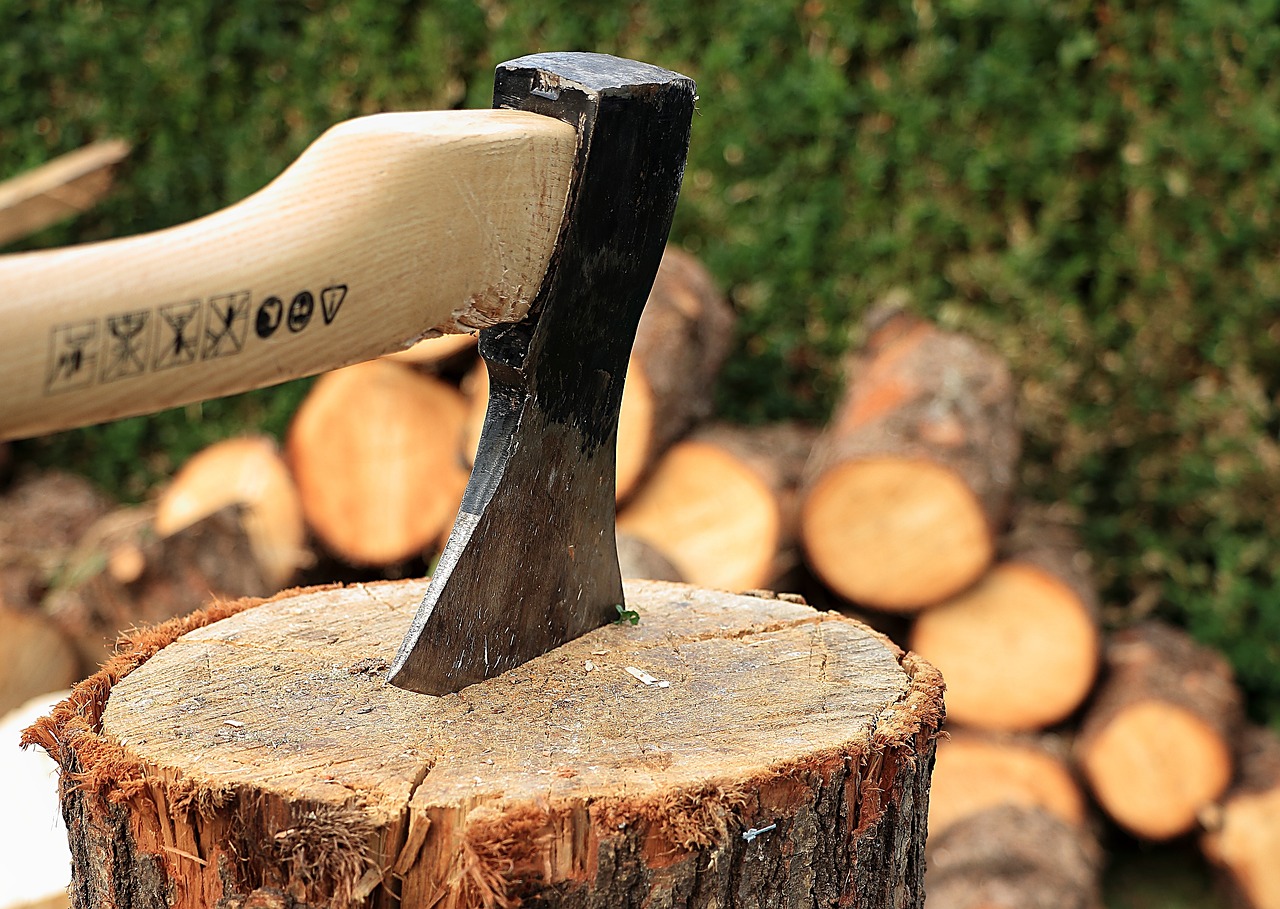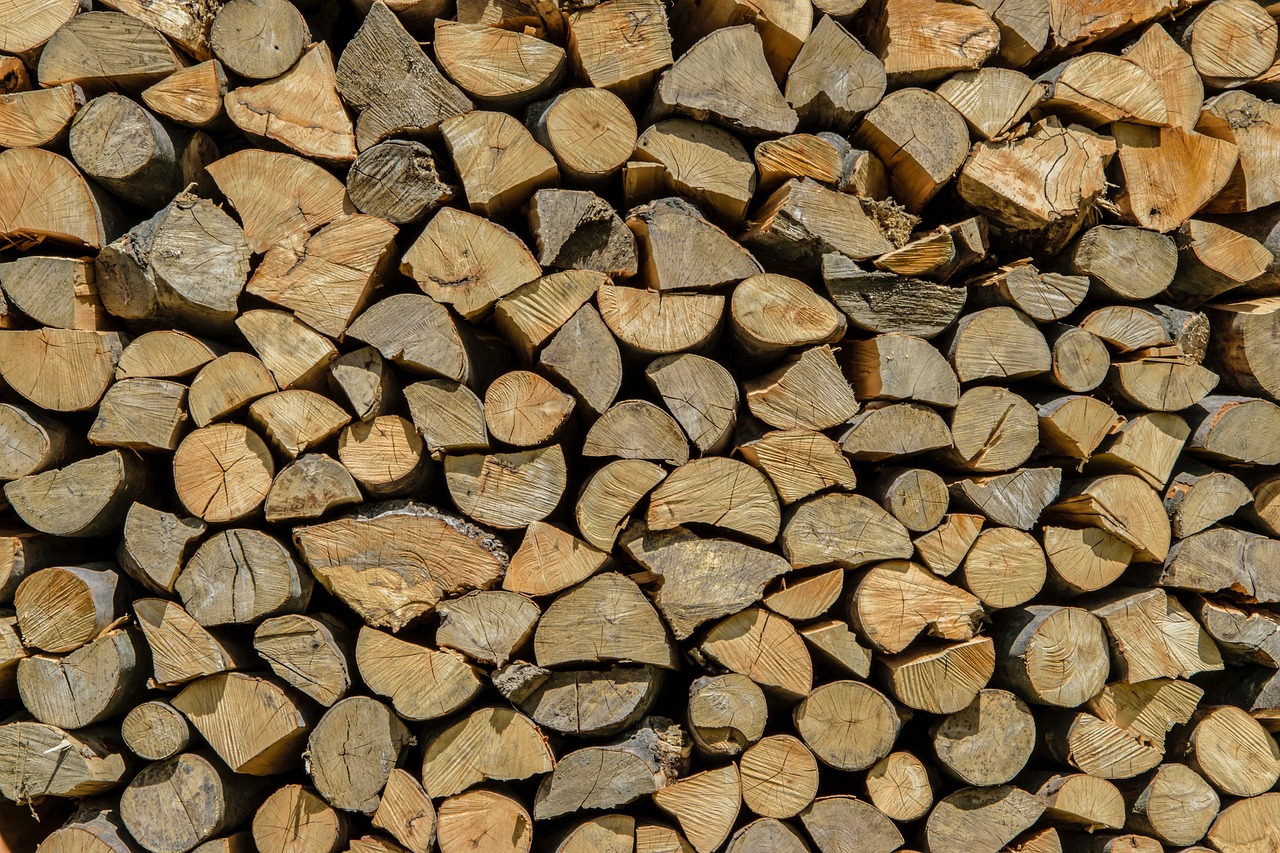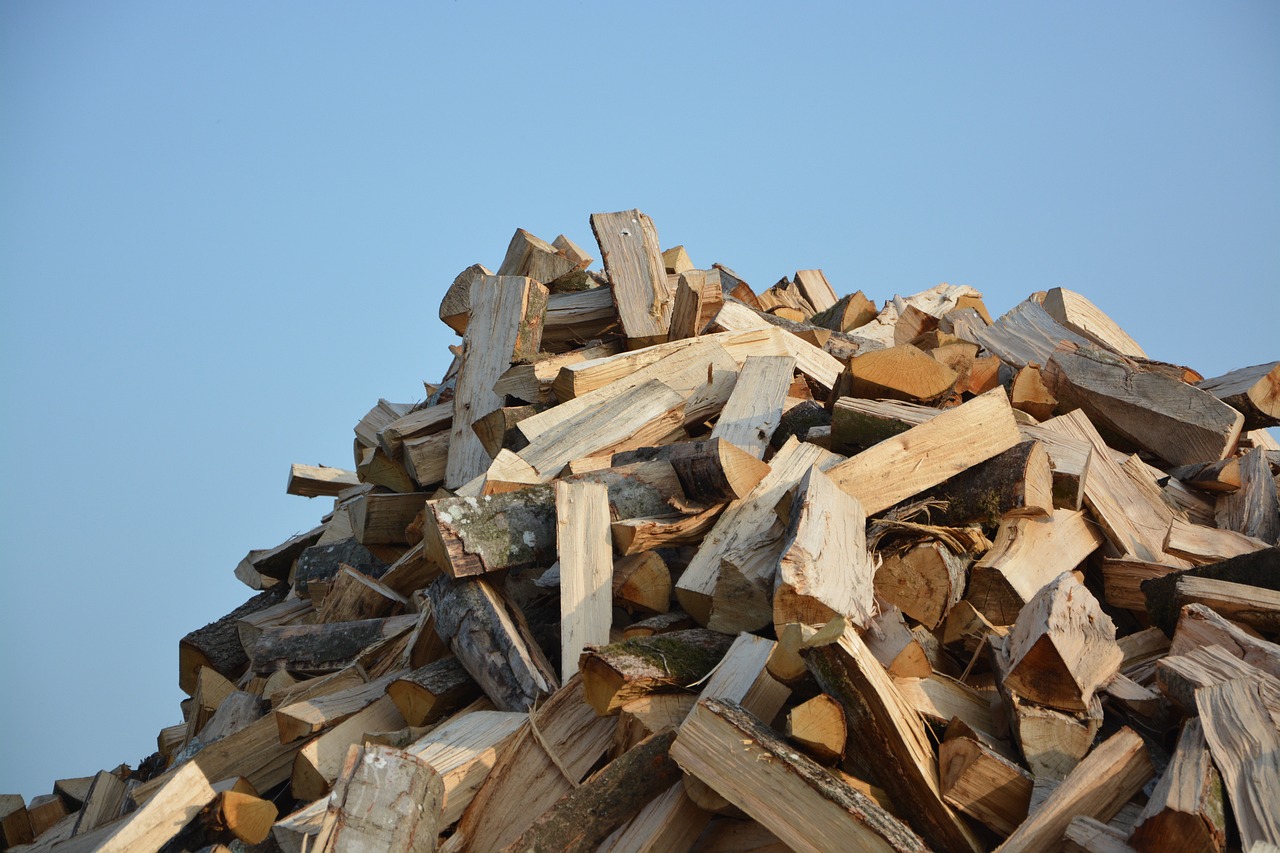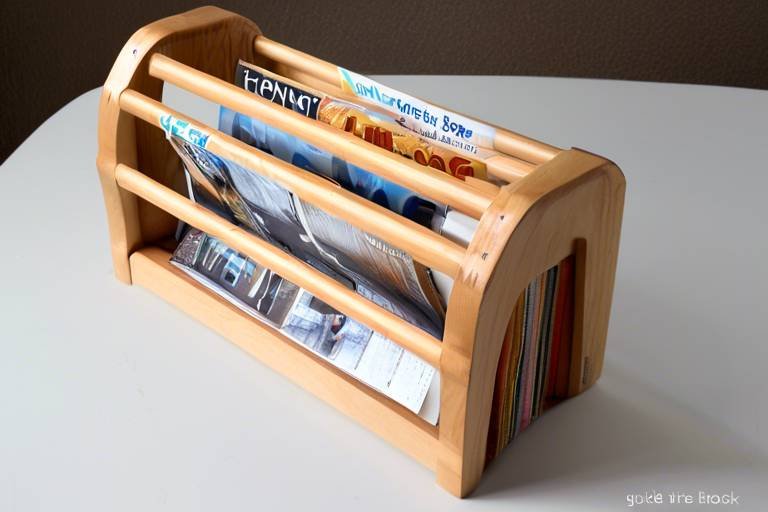Prepare for Winter: DIY Wooden Firewood Rack
As the chilly winds begin to whistle and the days grow shorter, it’s time to prepare for winter. One of the best ways to ensure your home stays warm and cozy is by having a reliable source of firewood. But where do you store all that wood? Enter the DIY wooden firewood rack! Building your own firewood rack not only saves you money, but it also gives you a sense of accomplishment and a chance to showcase your craftsmanship. Imagine stepping outside to grab a log for your fireplace, knowing exactly where to find it, all while keeping it organized and dry. Sounds great, right? Let’s dive into why a firewood rack is essential for your winter preparation.
A firewood rack is more than just a storage solution; it’s a game-changer for your winter experience. First off, it promotes improved air circulation around your firewood. This is crucial because well-ventilated wood dries out faster, reducing the chances of mold and rot. No one wants to burn damp wood that produces more smoke than heat!
Additionally, a firewood rack protects your wood from moisture. By elevating your firewood off the ground, you create a barrier against rain and snow. This means your logs will be ready to burn when you need them, without the hassle of waiting for them to dry out. Plus, having easy access to your firewood means you can spend less time searching for logs and more time enjoying the warmth of your fire. Who doesn’t love curling up by a crackling fire with a good book or a hot drink?
Before you roll up your sleeves and get started on this DIY project, you need to gather some essential materials. Here’s a quick list to help you prepare:
- Wood Types: Choose durable woods like cedar or pressure-treated lumber for longevity.
- Tools Required: A saw, drill, measuring tape, and screws are your best friends in this project.
- Additional Supplies: Sandpaper and wood sealant can help protect your rack from the elements.
Having the right materials on hand will make your building process smoother and more enjoyable. Plus, it ensures that your firewood rack is sturdy and reliable for years to come!
Now that you have your materials, let’s get down to the nitty-gritty of building your wooden firewood rack. This section will guide you through each step, ensuring that you end up with a functional and attractive storage solution.
First things first, accurate measurements are key to a successful build. Measure the space where you plan to place your firewood rack. Consider how much wood you typically use during the winter months and adjust your dimensions accordingly. Once you have your measurements, use a saw to cut your wood to the appropriate lengths. Remember the golden rule: measure twice, cut once! This will save you from any frustrating mistakes.
With your pieces cut, it’s time to assemble your rack. Start by laying out the base and securing the side pieces. Use screws to connect the wood securely, ensuring that everything is stable. A wobbly rack is the last thing you want when you’re stacking heavy logs! Once the frame is complete, you can add cross supports for extra stability. This is crucial, especially if you plan to stack a large quantity of firewood.
When it comes to firewood racks, the options are nearly endless. You can customize your rack to fit your outdoor space and aesthetic preferences. Whether you prefer a rustic look with reclaimed wood or a sleek modern design, the choice is yours. Think about the size and style that will work best for your home and garden.
Do you lean more towards a traditional style or a contemporary design? Traditional racks often feature simple lines and a classic appearance, while modern designs might incorporate geometric shapes and innovative materials. Each style has its unique charm and functionality, allowing you to choose what resonates with your personal taste.
Why stop at just a firewood rack? Consider adding features like a cover to protect your wood from rain or integrated tool storage for your fire-starting essentials. These additions can greatly enhance the usability of your firewood rack, making it a more versatile outdoor feature.
Once your firewood rack is complete, it’s important to maintain it for longevity and performance. Regularly check for any signs of wear and tear, and treat the wood with a sealant to protect it from the elements. Keeping your firewood dry is also crucial, so consider covering it during particularly wet weather. A well-maintained firewood rack not only looks great but ensures you always have a reliable supply of dry wood ready to go!
Q: How much firewood can a standard rack hold?
A: It typically depends on the size of your rack, but most can hold between 1 to 2 cords of wood.
Q: What’s the best way to stack firewood?
A: Stack your firewood in a crisscross pattern for optimal air circulation, allowing it to dry out properly.
Q: How often should I check my firewood supply?
A: It’s a good idea to check your supply at least once a month during the winter to ensure you have enough for your needs.

Benefits of a Firewood Rack
When the cold winds of winter start to howl, having a reliable source of heat becomes essential. This is where a firewood rack comes into play, offering a multitude of benefits that can enhance your winter experience. First and foremost, a firewood rack promotes improved air circulation around your firewood. Unlike stacking wood directly on the ground, which can trap moisture and lead to rot, a rack elevates the wood, allowing air to flow freely. This is crucial because dry wood burns more efficiently, providing you with a cozy fire without the hassle of smoke and excess soot.
Another significant advantage is the protection from moisture. When firewood is stored directly on the ground, it is vulnerable to dampness from rain or snow, which can compromise its quality. A firewood rack keeps your logs off the ground, shielding them from the elements. Imagine stepping outside to grab a piece of wood and finding it dry and ready to burn, rather than soggy and useless. This simple structure can make all the difference in your winter warmth.
Moreover, a firewood rack offers easy access to your firewood supply. No more digging through a messy pile of logs or searching for the right piece in a chaotic stack. With a well-organized rack, you can quickly grab what you need, saving you time and effort. This convenience is especially appreciated on those chilly nights when all you want is to stoke the fire and relax.
In addition to these practical benefits, a firewood rack can also serve as a decorative element in your outdoor space. Whether you prefer a rustic wooden design or a sleek modern look, a firewood rack can enhance the aesthetic of your yard or patio. It’s not just a functional piece; it can also be a conversation starter, showcasing your DIY skills and love for cozy evenings by the fire.
To sum it up, investing in a firewood rack is a smart decision for any homeowner looking to optimize their winter experience. With benefits ranging from improved air circulation and moisture protection to easy access and aesthetic appeal, it’s a practical addition that pays off in comfort and convenience. So, why not take the plunge and build your own firewood rack? Your future self will thank you!

Materials Needed
Gathering the right materials is crucial for your DIY project, especially when it comes to constructing a sturdy and functional wooden firewood rack. You want to ensure that your rack not only looks great but also stands the test of time through the harsh winter months. So, what do you need? Let’s break it down.
First, you’ll need to choose the right type of wood. While there are various options, pressure-treated lumber is often recommended due to its durability and resistance to decay. Some other popular choices include cedar and redwood, which naturally resist moisture and insects. Depending on your design preference, you may also want to consider using plywood for the base or sides.
Next, let’s talk tools. Here’s a quick list of essential tools that will make your construction process smoother:
- Measuring Tape: For precise measurements.
- Circular Saw: To cut your wood to the desired lengths.
- Drill: For making holes and securing screws.
- Screwdriver: To tighten everything up.
- Level: To ensure your rack is balanced.
In addition to wood and tools, you’ll also need some hardware. This includes screws and brackets to hold everything together securely. You might also want to grab some wood glue for added stability, especially at the joints. Don’t forget about finishing touches like stain or sealant to protect your rack from the elements and give it a polished look.
Finally, it’s a good idea to have some sandpaper on hand to smooth out any rough edges after cutting. This not only enhances the appearance of your rack but also prevents any splinters that could harm you or your firewood.
Here’s a quick reference table summarizing the materials needed:
| Material | Purpose |
|---|---|
| Pressure-treated lumber or cedar | Main structure of the rack |
| Plywood | Base or side panels |
| Measuring Tape | For accurate measurements |
| Circular Saw | Cutting wood to size |
| Drill and Screws | Assembling the rack |
| Sandpaper | Smoothing edges |
| Stain or Sealant | Protection and finishing |
With these materials gathered, you’re well on your way to creating a beautiful and functional wooden firewood rack that will not only serve its purpose but also add a touch of charm to your outdoor space. So, roll up those sleeves and get ready to build something amazing!

Step-by-Step Instructions
Building your own wooden firewood rack might sound like a daunting task, but trust me, it’s as satisfying as it is straightforward! With just a few materials and some elbow grease, you’ll have a sturdy rack that not only serves a practical purpose but also adds a rustic charm to your outdoor space. So, let’s roll up our sleeves and dive into this DIY adventure!
The first step in your firewood rack journey is to gather all the necessary materials. You’ll need some quality wood—cedar or pine works great due to their durability and resistance to rot. Make sure you have enough wood to create a frame and shelves; the quantity will depend on how much firewood you plan to store. You’ll also need screws, wood glue, and a weatherproof finish to protect your creation from the elements. Oh, and don’t forget the tools! A saw, drill, measuring tape, and a level are essential to ensure everything fits together perfectly.
Once you have everything ready, it’s time to measure and cut the wood. Accurate measurements are crucial here. Start by deciding on the dimensions of your rack. A common size is about 4 feet wide, 4 feet tall, and 2 feet deep, but you can adjust this based on your needs. Use your measuring tape to mark the wood, and then carefully cut it to size. Remember, measure twice, cut once! This will save you from any frustrating mistakes later on.
Now that you have your pieces cut, it’s time to assemble the rack. Begin by laying out the base. Take two longer pieces for the sides and connect them with two shorter pieces for the front and back. Use your drill to secure everything with screws, ensuring that the frame is square and level. This is where the wood glue comes in handy; applying it to the joints before screwing will provide extra stability. Once the base is secure, add the vertical supports, which will hold the shelves. Make sure they are evenly spaced to distribute the weight of the firewood.
Next, it’s time to install the shelves. Depending on your design, you might want to create two or three levels. Cut additional pieces of wood to the width of your rack and attach them securely to the vertical supports. Again, using wood glue and screws will help ensure that the shelves can handle the weight of the firewood without bowing or breaking. Once everything is assembled, give the entire rack a thorough sanding to smooth out any rough edges. You want to avoid splinters, especially when you’re reaching for that cozy firewood!
Finally, finish your rack with a weatherproof sealant to protect it from rain and snow. This step is crucial if you want your firewood rack to last through many winters. Once the sealant is dry, you can place your newly built rack in your desired location—preferably near your fireplace or fire pit for easy access. Stack your firewood neatly, ensuring that it’s elevated off the ground to allow for air circulation and to keep it dry. And just like that, you have your very own firewood rack!
As you embark on this DIY project, remember that the key to success is patience and precision. Take your time with each step, and don’t hesitate to ask a friend for help if needed. Building your firewood rack can be a fun and rewarding experience that not only prepares you for winter but also enhances your outdoor space!
1. How much wood do I need to build a firewood rack?
The amount of wood you need depends on the size of the rack you want to build. For a standard 4x4x2 foot rack, you will need about 10-12 pieces of 2x4 lumber.
2. Can I use treated wood for my firewood rack?
It's best to avoid treated wood for a firewood rack, as the chemicals can leach into the wood and contaminate your firewood. Stick to untreated options for safety.
3. How can I ensure my firewood stays dry?
Make sure your firewood rack is elevated off the ground and has a roof or cover if possible. This will protect your wood from rain and snow while allowing airflow.
4. What design options are available for firewood racks?
Firewood racks can range from simple and functional to decorative pieces. You can choose between traditional styles or modern designs, depending on your aesthetic preference.

Measuring and Cutting Wood
When it comes to building your wooden firewood rack, measuring and cutting wood accurately is paramount. Think of it as laying the foundation for a sturdy house; if the base is crooked, everything else will follow suit. So, how do you ensure your measurements are spot on? First, grab a reliable tape measure and a pencil. You want to measure twice and cut once—this old adage holds true in woodworking. Start by determining the dimensions of your firewood rack based on your available space and the amount of firewood you plan to store. A typical rack might be around 4 feet long, 3 feet high, and 2 feet deep, but feel free to adjust these measurements to suit your needs.
Once you've settled on your dimensions, it’s time to mark your cuts on the lumber. Use the pencil to draw clear, straight lines where you intend to cut. A miter saw or a circular saw will be your best friends here, allowing for precise cuts that will make assembly a breeze. Remember to wear safety goggles and ear protection—safety first, right? As you cut, keep your hands clear of the blade and ensure the wood is securely clamped down. This will not only help you avoid accidents but will also provide cleaner cuts.
After you have your pieces cut, it’s a good idea to lay them out before you start assembling. This way, you can visualize how everything will fit together. If you notice any pieces that seem off, now’s the time to fix them! A little extra attention during this stage can save you headaches later on. If you’re using different types of wood, keep in mind that some woods cut easier than others. For example, softer woods like pine are generally easier to work with compared to hardwoods like oak. Choose wisely based on your skill level and the tools you have at hand.
Lastly, don’t forget about the finishing touches. After cutting, sand down the edges to avoid splinters and rough surfaces. A smooth finish will not only look better but will also be safer to handle. If you plan to treat the wood with a sealant or stain, now is the perfect time to do so. This will help protect your firewood rack from the elements, ensuring its durability throughout the winter months. Remember, a well-measured and cut firewood rack is the first step towards a cozy, warm winter!
- What type of wood is best for a firewood rack? Generally, pressure-treated lumber or cedar is recommended due to their resistance to moisture and decay.
- How long should my firewood rack be? This depends on how much firewood you plan to store, but a good starting point is around 4 feet.
- Do I need to treat the wood? Yes, applying a sealant or stain can significantly increase the lifespan of your firewood rack by protecting it from the elements.
- Can I build a firewood rack on my own? Absolutely! With the right tools and instructions, building a firewood rack can be a fun and rewarding DIY project.

Assembling the Rack
Now that you’ve measured and cut your wood, it’s time to bring your firewood rack to life! Assembling the rack is like piecing together a puzzle; every part has its place, and when fitted correctly, it creates a sturdy and functional structure. Start by laying out all your pieces on a flat surface. This will give you a clear view of what you have and how everything fits together. It’s essential to keep your workspace organized, as a cluttered area can lead to mistakes.
Begin by taking the two vertical posts, which will serve as the backbone of your rack. Position them upright and parallel to each other, ensuring they are the same height. Next, take your horizontal beams—these will act as the support for your firewood. Attach one beam near the bottom of the vertical posts to create a solid base. Use wood screws to secure the beam tightly, ensuring that it’s flush against the posts. This is crucial because a strong base will support the weight of the firewood.
As you continue assembling, add the second horizontal beam about halfway up the vertical posts. This beam will provide additional support and help maintain the structure’s integrity. Make sure to check that everything is level and square—this means that the corners form right angles and the structure stands evenly. A little adjustment now can save you a lot of trouble later!
Once the main frame is assembled, it’s time to add the cross supports, which will give your rack extra stability. These can be added diagonally between the vertical posts and the horizontal beams. Not only do they look great, but they also prevent any wobbling, especially when the rack is loaded with firewood. Secure these supports with screws, ensuring they’re tight and stable.
Finally, take a step back and admire your work! Before you finish, it’s a good idea to sand down any rough edges to prevent splinters and ensure safety. If you want to protect your wood from the elements, consider applying a weatherproof sealant. This will help your firewood rack stand the test of time, keeping it functional and looking great throughout the winter months.
In summary, assembling your firewood rack is a straightforward process that requires attention to detail and a bit of patience. By following these steps and taking your time, you’ll create a beautiful and functional piece that will serve you well throughout the cold season. Remember, a well-assembled rack not only looks good in your yard but also keeps your firewood dry and ready to use!
- How long does it take to build a firewood rack? Depending on your skill level and the complexity of the design, it can take anywhere from a few hours to a full day.
- What type of wood is best for a firewood rack? Pressure-treated lumber or cedar are excellent choices due to their durability and resistance to moisture.
- Do I need any special tools? Basic tools like a saw, drill, and screwdriver are typically sufficient for building a firewood rack.
- Can I customize the size of my firewood rack? Absolutely! You can adjust the dimensions based on your space and the amount of firewood you need to store.

Design Options
When it comes to creating your own wooden firewood rack, the design options are as varied as the types of firewood you'll be storing. The beauty of a DIY project is that you can personalize it to fit your space and aesthetic preferences. Whether you have a cozy cabin vibe or a sleek modern home, there’s a firewood rack design out there that can complement your style while serving a practical purpose.
First off, consider the size of your firewood rack. Do you have a spacious backyard, or is your outdoor area more compact? The dimensions of your rack will largely depend on the amount of firewood you typically use, as well as the space you have available. A larger rack can hold more wood, which means fewer trips to refill it, but it should also fit comfortably in your yard without overwhelming the space.
Next, think about the style of the rack. Traditional designs often feature a rustic look, using reclaimed wood or logs to create a charming, homey feel. On the other hand, modern designs might incorporate sleek lines and metal accents, offering a more contemporary aesthetic. The choice between these styles can significantly impact the overall look of your outdoor area. For example, a traditional rack can evoke a sense of warmth and nostalgia, while a modern rack might convey a sense of minimalism and sophistication.
Additionally, your rack's layout can enhance its functionality. For instance, you might opt for a horizontal rack that allows for easy stacking and access, or a vertical design that saves space while still providing ample storage. Some designs even incorporate additional features, such as a cover to protect your firewood from the elements or integrated tool storage to keep your fire-starting essentials close at hand.
Here’s a quick comparison of the two main design styles:
| Feature | Traditional Design | Modern Design |
|---|---|---|
| Materials | Reclaimed wood, logs | Metal, treated wood |
| Style | Rustic, homey | Sleek, minimal |
| Space Efficiency | May take up more space | Often more compact |
Ultimately, the design options for your firewood rack should reflect your personal taste and the practical needs of your winter firewood supply. Don’t hesitate to get creative! Maybe you want to paint your rack a bold color to make it a statement piece in your yard, or perhaps you want to integrate a small bench for seating. The sky's the limit when it comes to customizing your firewood storage solution!
Q: How do I determine the right size for my firewood rack?
A: Consider how much firewood you typically use throughout the winter and the space you have available. Measure your area to ensure a good fit.
Q: What materials are best for building a firewood rack?
A: Untreated hardwood, pressure-treated lumber, or even metal can be great choices. Make sure to avoid materials that may rot or deteriorate quickly.
Q: Can I build a firewood rack without any woodworking experience?
A: Absolutely! With the right plans and tools, even beginners can successfully create a sturdy firewood rack. Just take your time and follow the instructions carefully.
Q: How can I maintain my firewood rack?
A: Regularly check for any signs of wear or damage, and make sure to keep it clean and free from debris. If your rack is made of wood, consider applying a sealant to protect it from moisture.

Traditional vs. Modern Designs
When it comes to firewood racks, the choice between traditional and modern designs can reflect not just your personal style but also how you plan to use the rack. Traditional firewood racks often evoke a rustic charm, typically made from sturdy materials like wood and metal. These designs are characterized by their simplicity and functionality, often featuring a basic rectangular shape that allows for easy stacking of firewood. If you envision a cozy cabin aesthetic, a traditional rack might be your best bet, providing that classic look that pairs beautifully with a roaring fireplace.
On the other hand, modern designs take a more contemporary approach. They often incorporate sleek lines and innovative materials, such as stainless steel or even recycled materials, that can fit seamlessly into a modern outdoor space. These racks might feature artistic elements or unique shapes that serve as a statement piece in your garden or patio. Imagine a firewood rack that not only serves its purpose but also enhances the visual appeal of your outdoor area!
To help you understand the differences better, let’s break down some key features of both styles:
| Feature | Traditional Designs | Modern Designs |
|---|---|---|
| Material | Wood, Metal | Stainless Steel, Recycled Materials |
| Shape | Rectangular, Simple | Unique, Artistic Shapes |
| Style | Rustic, Cozy | Contemporary, Sleek |
| Functionality | Basic, Straightforward | Innovative, Space-Saving |
Ultimately, the choice between traditional and modern designs should cater to your specific needs and the overall aesthetic of your home. Do you want your firewood rack to blend in with a rustic landscape, or are you looking for something that stands out and makes a statement? The beauty of this DIY project is that you can customize it to reflect your personality and style.
Consider how each design will impact your space and functionality. While traditional racks may be more straightforward and less expensive, modern designs could offer enhanced durability and innovative features that make your life easier. Think about your long-term needs: will you be using the rack frequently, or is it more for occasional use? This will guide you in making the best choice for your firewood storage.
In the end, whether you opt for a traditional or modern firewood rack, you're not just building a storage solution; you're creating an element that adds character to your home. So, grab your tools, choose your style, and get ready to enjoy those cozy winter nights by the fire!
- How do I choose the right size for my firewood rack? - Measure the space where you plan to place the rack and consider how much firewood you typically use.
- What type of wood is best for building a firewood rack? - Cedar and redwood are great choices due to their natural resistance to moisture.
- How can I protect my firewood from moisture? - Ensure your rack is elevated off the ground and consider adding a cover for extra protection.
- Can I customize my firewood rack? - Absolutely! Feel free to add features like shelves or tool storage to suit your needs.

Incorporating Additional Features
When it comes to building your wooden firewood rack, why stop at just a basic structure? can significantly enhance both the functionality and aesthetic appeal of your rack, making it a more integral part of your outdoor space. Imagine having a firewood rack that not only holds your logs but also complements your backyard decor and provides added convenience. Here are some thoughtful features you might consider adding:
One popular addition is a cover. A weather-resistant cover can protect your firewood from rain and snow, ensuring that it remains dry and ready for use whenever you need it. This is particularly crucial during those harsh winter months when moisture can quickly ruin your wood supply. A simple tarp can do the trick, but for a more polished look, consider building a custom cover that fits snugly over your rack.
Another practical feature to think about is integrated tool storage. If you often find yourself scrambling for your fire-starting tools, why not incorporate a small shelf or hooks into your design? This way, you can keep your kindling, matches, and even a few decorative items all in one place. Not only does this add convenience, but it also keeps your outdoor area tidy.
Additionally, you might want to consider a built-in log separator. This feature can help you organize your wood by size, making it easier to grab what you need for a cozy fire. Imagine having a designated space for your larger logs and another for kindling, all neatly arranged and easily accessible. This organization can save you time and effort, especially when you're eager to start a fire on a chilly evening.
Lastly, think about aesthetic enhancements. You can paint or stain your firewood rack to match your home or garden. Adding decorative elements like carved designs or even fairy lights can transform your rack into a charming focal point of your outdoor area. After all, who says practical can't be beautiful?
In summary, incorporating these additional features can elevate your firewood rack from a simple storage solution to a multifunctional and stylish addition to your outdoor space. Whether you opt for a cover, tool storage, or aesthetic enhancements, each feature brings its own unique benefits, making your winter experience all the more enjoyable.
- How do I choose the right wood for my firewood rack? - Opt for durable woods like cedar or redwood that resist decay and withstand outdoor elements.
- Can I build a firewood rack on my patio? - Absolutely! Just ensure it’s stable and doesn’t obstruct any pathways.
- How do I maintain my firewood rack? - Regularly check for any signs of rot or damage, and treat the wood with sealant to prolong its life.

Maintenance Tips
Maintaining your firewood rack is essential for ensuring its longevity and performance, especially during the harsh winter months. Just like a car needs regular oil changes, your firewood rack requires some TLC to keep it in top shape. One of the first things to keep in mind is to regularly check for any signs of wear and tear. Look for cracks, splinters, or rust (if you used metal components), and address these issues promptly. A little bit of maintenance can go a long way in prolonging the life of your rack.
Another crucial aspect of maintenance is ensuring that your firewood remains dry and ready for use. This means keeping an eye on the positioning of your rack. Ideally, it should be placed in a location that allows for good air circulation. If your rack is too close to a wall or other obstructions, it can trap moisture, leading to moldy or rotting wood. Consider elevating your rack slightly off the ground using bricks or pavers to prevent moisture from seeping in from the soil.
Additionally, it's a good idea to periodically clean your firewood rack. Dust, dirt, and debris can accumulate over time, which not only looks unsightly but can also harbor pests. A simple clean-up can be done with a broom or a damp cloth. If you notice any pests, such as termites or ants, take immediate action to treat the affected area. You might also want to consider applying a protective sealant or wood preservative to prevent decay and extend the life of your wood.
Lastly, always keep an eye on your firewood supply. Make sure to rotate your wood, using the older pieces first to ensure that nothing goes to waste. This practice not only keeps your firewood fresh but also helps maintain an organized and accessible storage system. By following these maintenance tips, you can ensure that your firewood rack remains a reliable asset throughout the winter.
Here are some common questions regarding the maintenance and care of your firewood rack:
- How often should I check my firewood rack for damage? It's advisable to inspect your rack at least once a month during the winter season.
- What is the best way to clean my firewood rack? A simple broom or damp cloth works well to remove dust and debris. For stubborn stains, a mild soap solution can be used.
- Can I use treated wood for my firewood rack? Yes, treated wood can be used, but ensure that it is safe for contact with firewood, as some treatments can be toxic.
- How do I prevent pests from infesting my firewood? Keep your firewood dry and store it away from the ground. Regularly inspect for signs of pests and take action if needed.
Frequently Asked Questions
- What materials do I need to build a firewood rack?
To build a sturdy firewood rack, you'll need pressure-treated wood, screws, and tools like a saw, drill, and measuring tape. Common wood types include cedar or pine, which are durable and resistant to rot.
- How do I ensure my firewood stays dry?
To keep your firewood dry, elevate the rack off the ground and cover the top with a tarp or a specially designed cover. This protects it from rain and snow while allowing air circulation to prevent moisture buildup.
- Can I customize the design of my firewood rack?
Absolutely! You can customize the size, style, and layout to fit your outdoor space. Whether you prefer a traditional rustic look or a sleek modern design, there are plenty of options to match your aesthetic.
- How do I maintain my firewood rack?
Regular maintenance includes checking for signs of wear and tear, tightening screws, and ensuring the wood remains dry. Periodically treating the wood with a sealant can also help prolong its life.
- What are the benefits of using a firewood rack?
A firewood rack improves air circulation around your wood, protects it from moisture, and provides easy access when you need to grab a log for your fire. This can significantly enhance your winter experience!
- Do I need advanced skills to build a firewood rack?
Nope! Building a firewood rack is a straightforward DIY project that doesn't require advanced carpentry skills. Following simple step-by-step instructions will help you create a functional and attractive rack.



















